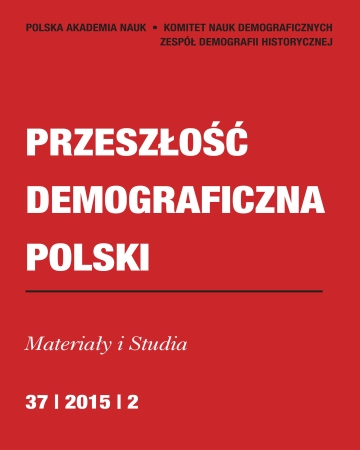Wielkość rodziny i gospodarstwa domowego w miastach południowej Małopolski w XVII i XVIII wieku
The Size of the Family and Household in the Towns of Southern Lesser Poland in the 17th and 18th Centuries
Author(s): Piotr MiodunkaSubject(s): History, Anthropology, Social Sciences, Sociology, Local History / Microhistory, Social history, Culture and social structure , History and theory of sociology, Social Theory
Published by: Wydawnictwo Naukowe Uniwersytetu Szczecińskiego
Keywords: small towns; Lesser Poland (Polish: Małopolska); a biological family; a household; lodgers; servants
Summary/Abstract: The article presents the question of an average size of the biological family, the household, and an average population of a house in smaller towns of Southern Lesser Poland, and from 1772 the western part of Galicia. The presented problems have been researched on the basis of narrative sources (municipal court’s registers) and quantitative sources (inventories, military conscription lists, parish registers). The author has also used the method of family reconstruction (Wojnicz); and confirmed that the desired model of the family was a simple family, which is visible in young married couples’ aspirations for independence, as well as older parents’ aspirations for providing sufficient income to survive after making over their real property. A biological family was usually composed of 4 people. Not much bigger were the Old Polish burgher households, which were composed of 4.5–5 people on average in Christian families and about four in the Jewish ones. What is more, those households were clearly smaller than the peasant ones, but the houses in smaller towns more frequently than in the country were occupied by more than one household. Servants were common in households and lodgers in houses.
Journal: Przeszłość Demograficzna Polski
- Issue Year: 37/2015
- Issue No: 2
- Page Range: 129-147
- Page Count: 19
- Language: Polish

